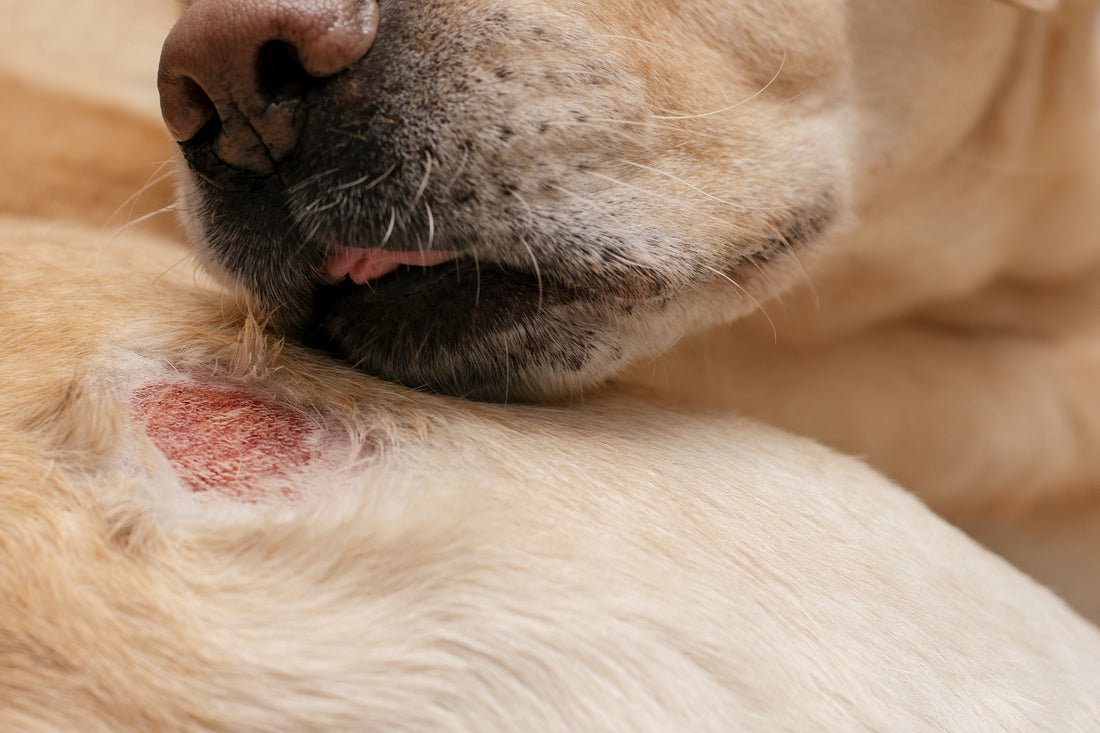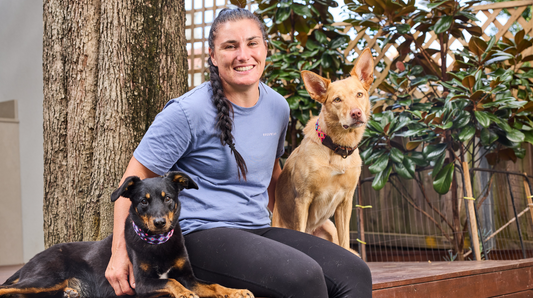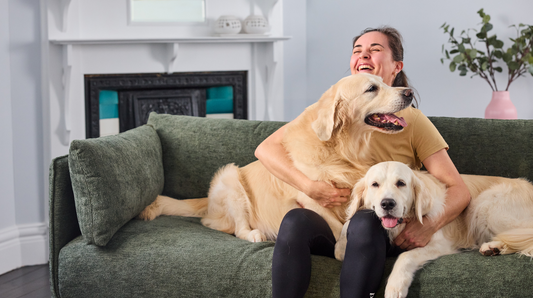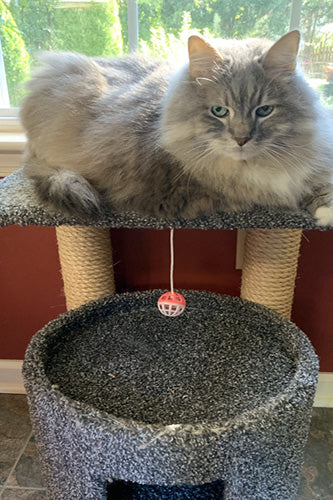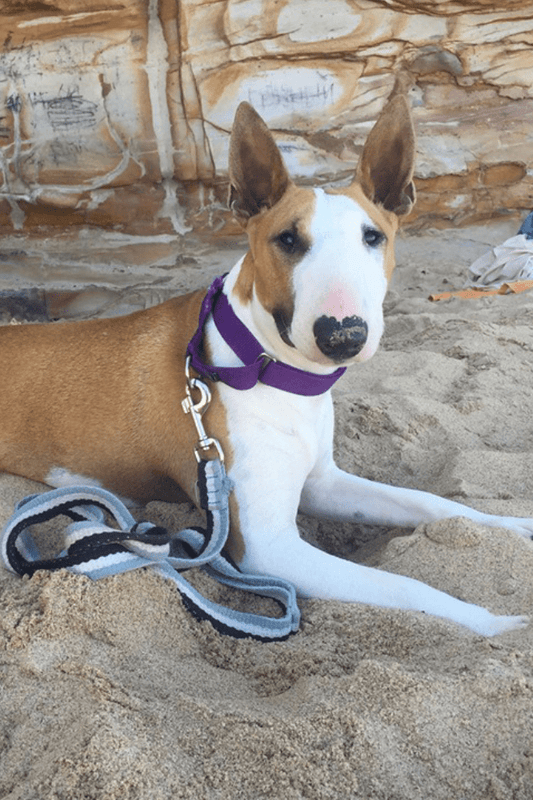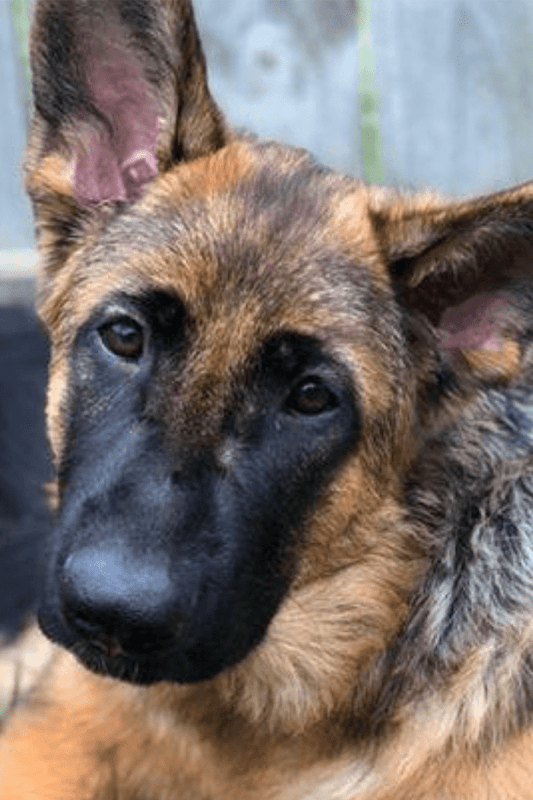Hot Spots In The Spotlight - Why Do Dogs Get Them & How Does Swimming Make It Worse?

It’s beautiful out. You’ve been for a walk with your dog, and they had a splash about in the sea or pool. Everyone’s relaxing now, but your dog won’t stop licking themselves. They’ve developed a hot spot. But what are they, what causes them, and how can you help your dog?
What are hot spots?
Hot spots, also known as “summer sores”, are clinically known as “acute moist dermatitis” or “pyotraumatic dermatitis”.
They’re red, inflamed, sore patches of skin that develop really rapidly. Most owners notice them within 72 hours of them beginning to develop. They get their name from the heat they radiate, thanks to the painful inflammation of the skin.
Around 15% of all dogs will have a hotspot during their lifetime. They’re uncomfortable and can develop into really serious, hard-to-manage skin conditions, so it’s important to begin treatment as soon as you notice them.
How to spot a hot spot on your dog
The main thing to look out for is your dog itching or licking a particular area excessively. You may also notice:
- Shiny skin patches
- Skin that looks moist or even oozes pus
- Bald patches
- Very red skin
- Swollen or raised patches

What causes hot spots?
Hot spots often develop on areas of skin where moisture gets trapped. Around the neck, under the legs, under collars, around the face, and near the tail.
There are a lot of things that can cause hot spots, so it’s important to rule out all of the potential causes with the help of your vet.
Potential causes of hot spots
- Fleas or flea allergies
- Seasonal and environmental allergies
- A poor diet or a food allergy
- Anal gland issues
- Underlying issues that might encourage excessive licking, such as arthritis or a grass seed in the skin
- Skin infections
- Damp skin caused by swimming or hot weather.

Hot Spots, Hot Weather And Swimming With Your Dog
As temperatures rise, the humidity and moisture in the air increase. This gets trapped in your dog's coat, particularly if they have a thick coat or are a double-coated breed. This damp, warm environment is the perfect place for bacteria to grow, eventually causing a hot spot to develop.
So, here in Australia, we’re already starting from a tricky place with our weather, and then we add in swimming.
Many of us love to take our dogs for a dip; it’s perfect to help them cool off, plus it’s incredible exercise, particularly for those with mobility problems like arthritis, so it's absolutely something we would encourage for your dog, but it’s also super important that you dry your dog thoroughly after their swim.
Leaving them with a damp, warm coat means the bad bacteria can proliferate on their skin and cause hot spots to flare up.

Not only that but salt and chlorine can also add to skin irritation issues. 🤦🏽
Treatment For Hot Spots
It’s important to see your vet as soon as you notice a hot spot developing on your dog, as it can quickly become painful, and infection can spread.
Your vet will trim the fur around the area to help it dry out. They’ll clean it with antiseptic to prevent or kill off any infection.
If the hot spot is severe, they might also give your dog a course of antibiotics combined with an anti-inflammatory and pain medication.
Often, you’ll be prescribed a topical spray treatment containing a steroid such as hydrocortisone, which will help to calm the skin. And unfortunately for your dog, they’ll likely head home in a swanky cone to stop them licking the hot spot. Gorgeous!
5 ways to help prevent hot spots

1. Rinse your dog after swimming
Chlorine from your pool can be irritating to your dog’s skin and can also cause it to be dry and flaky. Saltwater can also pose a problem. Although there are many benefits to swimming in the sea, the salt can dry the skin and make it more prone to problems. So, wherever you have been swimming, it's always best to rinse your dog off afterwards with clean, fresh water.
2.Dry your dog thoroughly
One of the biggest causes of hot spots is leaving your pet damp after a swim. Always ensure you dry their coat as much as possible. The moisture gets trapped against the skin, resulting in a warm, damp environment, which is perfect for bacterial growth and the ideal environment for hot spots to develop.
3. Groom your dog regularlyIf you have a thick or double-coated dog, regular grooming helps keep their fur mat-free. Mats in your dog's coat trap heat and moisture, and the mat pulls and irritates the skin.
4. Treat your dog for fleasIrritation by those pesky parasites can be a trigger for hotspots as your dog frantically scratches, damaging their skin and potentially causing infection.
5. Give your dog a skin support supplementStrengthen their skin from within with an Omega-based health and wellness supplement such as Antinol Plus. Antinol Plus strengthens your dog’s natural skin barrier and reduces inflammation, helping to maintain healthy skin and a beautiful coat.
Get your Antinol Plus Cooling Chamois when you order Antinol or your dog.
Behind everything we do here at Vetz Petz is a drive to keep dogs happy, healthy and active—and going swimming is incredible exercise for your dog, both mentally and physically. So we want you to keep doing it, and to help, we’re giving away free cooling towels with every Antinol Plus order this summer.
These towels are easy to carry on your walks and are designed to quickly dry your dog whilst helping them to cool off. Perfect for hot days on the beach or splashing in the pool.

Grab yours and enjoy a Wet Dog Summer!

